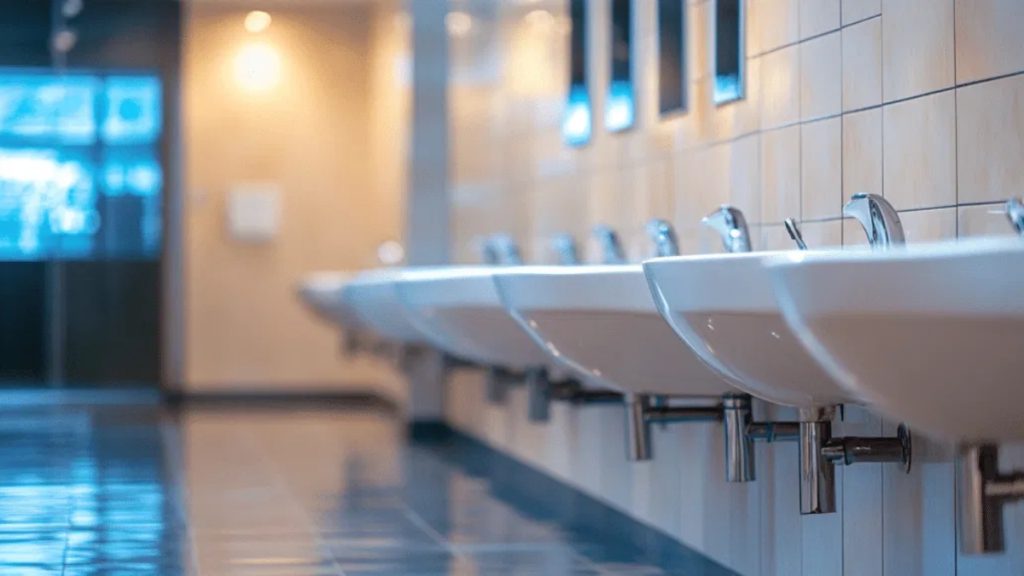Maintaining a clean and hygienic workplace has never been more important. From offices and retail stores to restaurants and healthcare facilities, businesses are prioritizing sanitation to protect employees and visitors. While cleaning schedules and hand sanitizers play a role, one area that often gets overlooked is the bathroom. Upgrading commercial restrooms can significantly improve cleanliness, comfort, and overall health standards.
Modern Fixtures for Better Hygiene
Outdated bathroom fixtures can be difficult to clean and prone to harboring germs. Replacing old sinks, faucets, and toilets with modern, touchless alternatives reduces points of contact and limits the spread of bacteria. Motion-sensor faucets, automatic soap dispensers, and hands-free flush systems make it easier to maintain hygiene without constant physical interaction.
Additionally, high-efficiency fixtures help conserve water, which supports sustainability efforts alongside improved cleanliness. These upgrades create a safer space while demonstrating a company’s commitment to health and environmental responsibility.
High-Quality Partitions for Privacy and Cleanliness
Privacy and cleanliness go hand in hand in commercial restrooms. Upgrading partitions to high-quality, durable materials ensures that the space remains sanitary and visually appealing. Materials such as solid plastic and stainless steel are resistant to moisture and easy to clean, preventing mold and mildew buildup.
For businesses looking for effective solutions, onepointpartitions.com offers durable and stylish bathroom partitions that stand up to frequent use. Investing in sturdy partitions not only enhances privacy but also reduces maintenance costs over time.
Improved Ventilation for Air Quality
Air quality is another factor that contributes to a healthy environment. Poor ventilation in bathrooms can lead to unpleasant odors and increased humidity, which fosters bacterial growth. Installing advanced ventilation systems or upgrading existing fans can significantly improve airflow and reduce moisture levels.
By keeping the air fresh and circulating, businesses can create a more inviting and sanitary space. Proper ventilation also supports overall building health by limiting the spread of airborne contaminants.
Flooring and Wall Materials That Resist Germs
The materials used for bathroom floors and walls can make a big difference in cleanliness. Non-porous tiles and antimicrobial surfaces are easier to clean and less likely to trap dirt or bacteria. Businesses can also consider slip-resistant flooring options to enhance safety and reduce the risk of accidents.
Updating bathroom walls with water-resistant paint or tiles adds an extra layer of protection against moisture buildup. These upgrades combine functionality with aesthetics, ensuring the restroom remains both hygienic and visually appealing.
Accessibility Features for Inclusivity
Health and hygiene upgrades should also address accessibility. Bathrooms that comply with ADA standards offer a safe and comfortable experience for all users, including those with mobility challenges. Installing grab bars, wider stalls, and lower sinks can make facilities more inclusive.
Inclusive restrooms not only meet legal requirements but also reflect a company’s commitment to supporting diversity and equality. These features promote safety while enhancing the user experience for everyone.
Touchless Accessories for Added Convenience
In addition to touchless faucets and soap dispensers, businesses can incorporate automated paper towel dispensers and sensor-activated hand dryers. These accessories further reduce contact points, helping to minimize the spread of germs.
Smart technology, such as occupancy sensors and automated lighting, can also improve energy efficiency and convenience. When paired with modern fixtures, these upgrades create a seamless and sanitary restroom experience.
Regular Maintenance Plans for Long-Term Results
Upgrades alone won’t guarantee cleanliness without ongoing maintenance. Establishing a regular cleaning and inspection schedule ensures that fixtures remain functional and sanitary. Businesses should also stock restrooms with high-quality cleaning supplies and disinfectants to tackle problem areas effectively.
Providing staff with training on proper sanitation practices can further reinforce hygiene standards. With a proactive maintenance plan, businesses can preserve the benefits of bathroom upgrades for years to come.
Conclusion: Investing in Health and Hygiene
Bathroom upgrades are more than just aesthetic improvements—they play a vital role in promoting health and hygiene in commercial spaces. From touchless fixtures and durable partitions to improved ventilation and antimicrobial surfaces, these enhancements contribute to cleaner and safer environments.
By prioritizing restroom upgrades, businesses can create spaces that support employee well-being, leave positive impressions on visitors, and demonstrate a commitment to public health. Whether planning a minor renovation or a complete overhaul, focusing on hygiene-friendly features will pay off in the long run.

